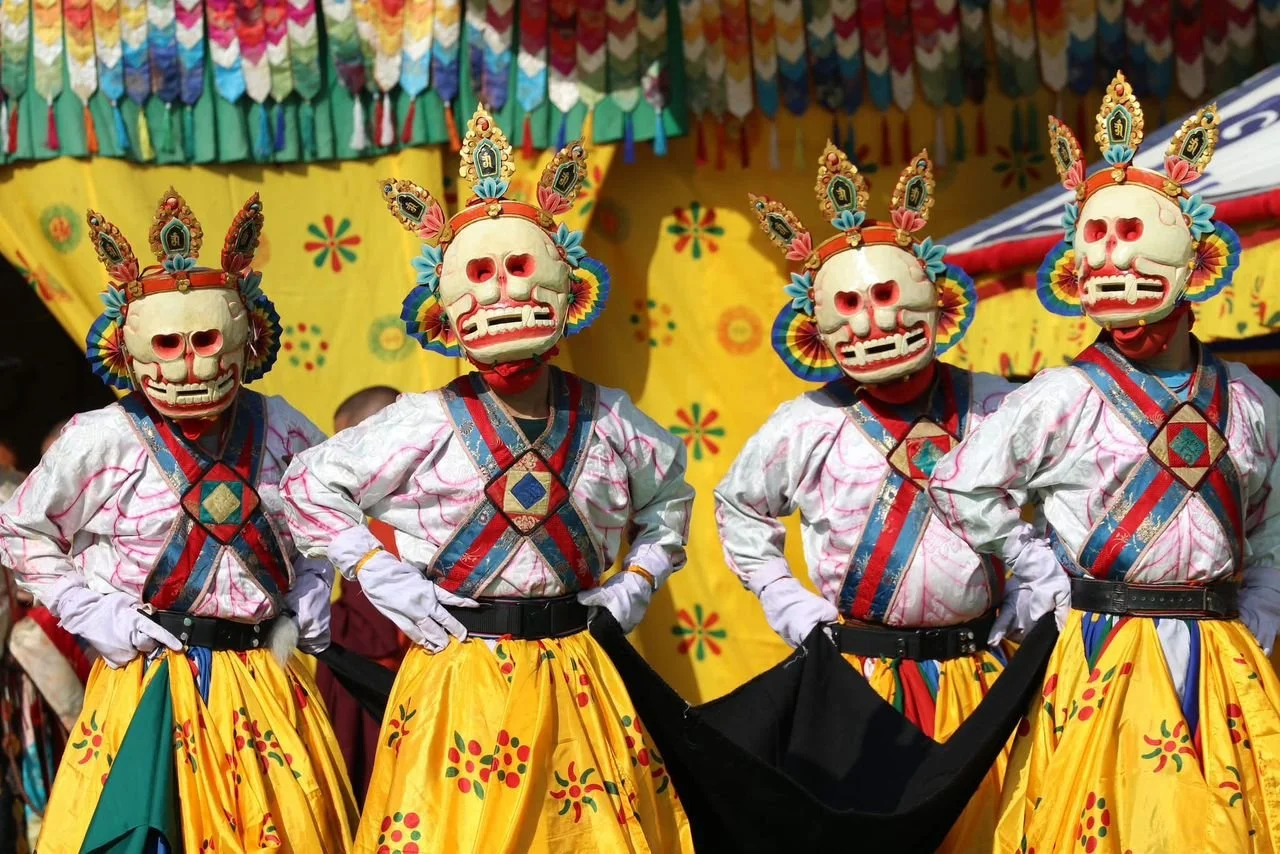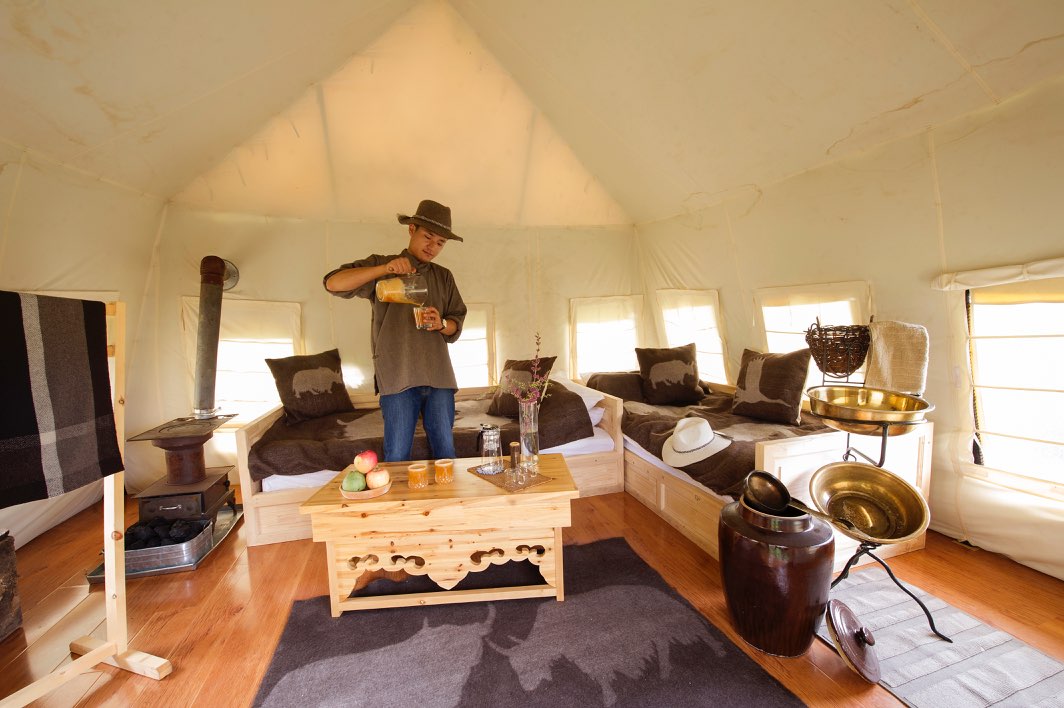Tibet as a travel destination is shrouded in an aura of mystery, and sometimes it can be difficult sifting fact from fiction or half-truth. One misconception that many would-be travellers to Tibet have is that the Tibetan Autonomous Region, or TAR, makes up the whole of Tibet. It doesn’t. Other parts of China are also Tibetan in culture, history, and landscape.
What do we mean by that? The TAR is a province in far-western China that borders Nepal, Bhutan, and parts of India. But ethnic and culturally Tibetan people live, and have lived for a long time, beyond the borders of the TAR. There are three main regions that have historically constituted Tibet: U-Tsang, Amdo, and Kham. These historic regions spill over into different modern-day geopolitical regions. Most of the TAR is U-Tsang, while the eastern parts also encompass parts of Kham. Kham also spills over into contemporary Sichuan and Yunnan provinces. Amdo falls mostly within Qinghai province, as well as slightly into Gansu.
Tibetans from these three broad regions are far from homogeneous, though. There are huge differences in culture and language between the different Tibetan peoples. Plus, what is commonly known as ‘Tibet’ now is, in many ways, gives a less ‘authentic’ insight into traditional Tibetan culture than other parts of Tibet, due to its political situation.
What this means for travelers is that there is far more of Tibet to see than the restricted and politically sensitive area of the TAR, and the cultures that dominate there. The sights and attractions of the TAR are unquestionably beautiful and fascinating, but there are many other things to see and do in those other provinces of China. Plus, in Amdo and Kham you don’t need the same kind of permit that you do for the TAR. You will need a visa for China, though.
Here’s a summary of some of the wonderful things you can experience in each of these three regions.
Amdo
The charm of Amdo lies in its vast empty plains, dotted with nomad's tents and yaks. It’s a large area, covering around 700,000 square kilometres (a little bigger than Ukraine), and covered in rolling grasslands dotted with herds of yaks and sheep, and punctuated by monastic villages. Amdowas (people from Amdo) were traditionally nomadic, moving their herds of livestock from pasture to pasture with the seasons, and living off the land.
Two highlights of Amdo are the monasteries at Labrang and Langmusi. Labrang Monastery is one of the six great monasteries of the Gelugpa (yellow hat) school of Tibetan Buddhism, so is an important pilgrimage site. The monastery is an enormous walled village, with wide paved roads for two-way traffic, electric streetlights, and a smattering of shops inside its walls. Founded in 1709, it was once the largest monastery in Amdo with 4,000 resident monks. Even though that number has dwindled to just 1,500 now, it’s still one of the largest in Tibet and wields considerable power in the region.
Langmusi is on the border of two provinces (Sichuan and Gansu), with a sizable monastery on each side of the border: Kirti Monastery on the Sichuan side, and Sertri Monastery on the Gansu side. But the highlight of Langmusi is the Namo Gorge, a narrow gorge through the cliffs. It’s so narrow that in parts you can touch both sides with outstretched arms. A shallow stream runs through the middle of it, as well as several impressive stalagmites and stalactites. Langmusi is also popular with intrepid travellers for its hiking and multi-day horse treks in the mountains.
And in case you thought that traveling through the grasslands of Tibet would mean roughing it in basic accommodation? It certainly doesn’t have to, with charming and authentic luxury tented accommodation that serves delicious food, not far from Labrang Monastery in Xiahe.
Kham
Kham offers a different kind of experience again, as jagged snow-capped peaks tower above the forested valleys. If you’re into off-the-beaten-path trekking and have experience in Nepal or other higher-altitude destinations, Kham’s Minya Konka Trek should be on your bucket list. Minya Konka, also known as Gongga Shan, is a mountain in eastern Tibet, within Sichuan Province. Discover hidden valleys and stunning alpine scenery in one of the few untouched areas of the world. Experience Tibetan Khampa culture (Khampas being the inhabitants of Kham), camp in high-altitude meadows with nomadic yak herders, and drink tea by the fire as the sun goes down. Get close to 6,000-metre peaks and soak in the unspoiled nature of the Tibetan Plateau on the trek of a lifetime in Tibet.
Khampas are also known as excellent horsemen, and travellers who don’t want to trek could check out the annual Yushu Horse Racing Festival in July/August instead. Horse racing festivals are a highlight of any trip to Kham, and are also popular in Amdo. The horse racing festival at Yushu is one of the biggest events of the year in eastern Tibet. Participants show off their talents on horseback, performing acrobatic tricks such as standing, firing arrows at targets, and sweeping up scarves from the ground while at gallop. There are also yak races and a full carnival of fun and games for families to enjoy. This is nomad Tibetan culture on display at its finest, as the empty grasslands fill with traditional yak hair tents as families pour into the area, wearing their best new clothes. There are many other festivals in the various regions of Tibet that you can attend throughout the year.
As well as treks and festivals, there are other great travel experiences to be enjoyed in Kham. Although it almost sounds too good to be real, the town of Shangri-La, with an ancient monastery makes a good base for a few days before ascending to Meile mountain. Half the fun is getting there through the grasslands, villages, and deep gorges of Sichuan and Yunnan Provinces. There are also some beautiful, boutique, Tibetan-style accommodation options in this area, if you prefer to travel in style and comfort. Plus, overland tours of Kham that start in Chengdu have the benefit of taking you to some of the highest places in the world—such as the Zheduo Mountain pass at 4200 metres—without you needing to trek there!
The TAR includes some of Tibetan Buddhism’s most important and holy sites—the Potala Palace, the Jokhang Temple, and the Kumbum at Gyantse—so travellers interested in Tibetan Buddhism will naturally be drawn to this region. Plus, it’s where you can visit Mt. Kailash, Mt. Everest (Qomolangma in the local language), and beautiful high-altitude lakes like Lake Namtso.
You don’t even need to commit to a full tour of the TAR to enjoy some of the highlights of Lhasa, the capital. A few days in Lhasa can easily be added on to tours of other parts of Tibet, or even Nepal (there are direct flights daily between Kathmandu and Lhasa). If seeing the Potala Palace is a dream of yours, it’s really quite attainable if you’re travelling in the region. Do make sure to factor enough days into your itinerary for acclimatization though, as Lhasa is very high (3656 metres) and many tour operators won’t take you to the Potala Palace, which requires climbing a lot of steps, until your third or fourth day in town. With a few extra days up your sleeve, you can easily add Shigatse, Gyantse, and Tsedang to your itinerary, too.
While it is necessary to have a different kind of permit and visa for travel to the TAR than other parts of China, contrary to widespread opinion this is not difficult to get, or much of a hassle. All visitors to the TAR must travel with a guide on an approved itinerary, so getting the necessary permits is as easy as handing your details over to your travel company. The requirements do differ though depending on whether you’re coming from other parts of China or from Nepal.
Beyond The Clouds plans trips in all regions of Tibet: TAR, Amdo, and Kham. We can arrange permits for travel in Tibet, or help design your Tibetan journey so that permits are not required. Email us to find out more: info@beyondtheclouds.org.nz




















